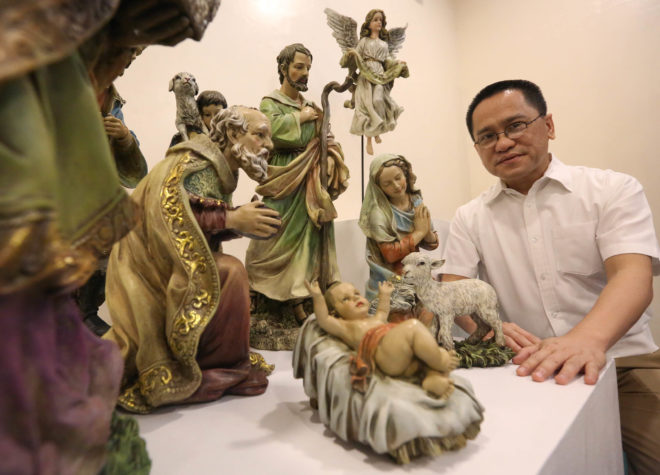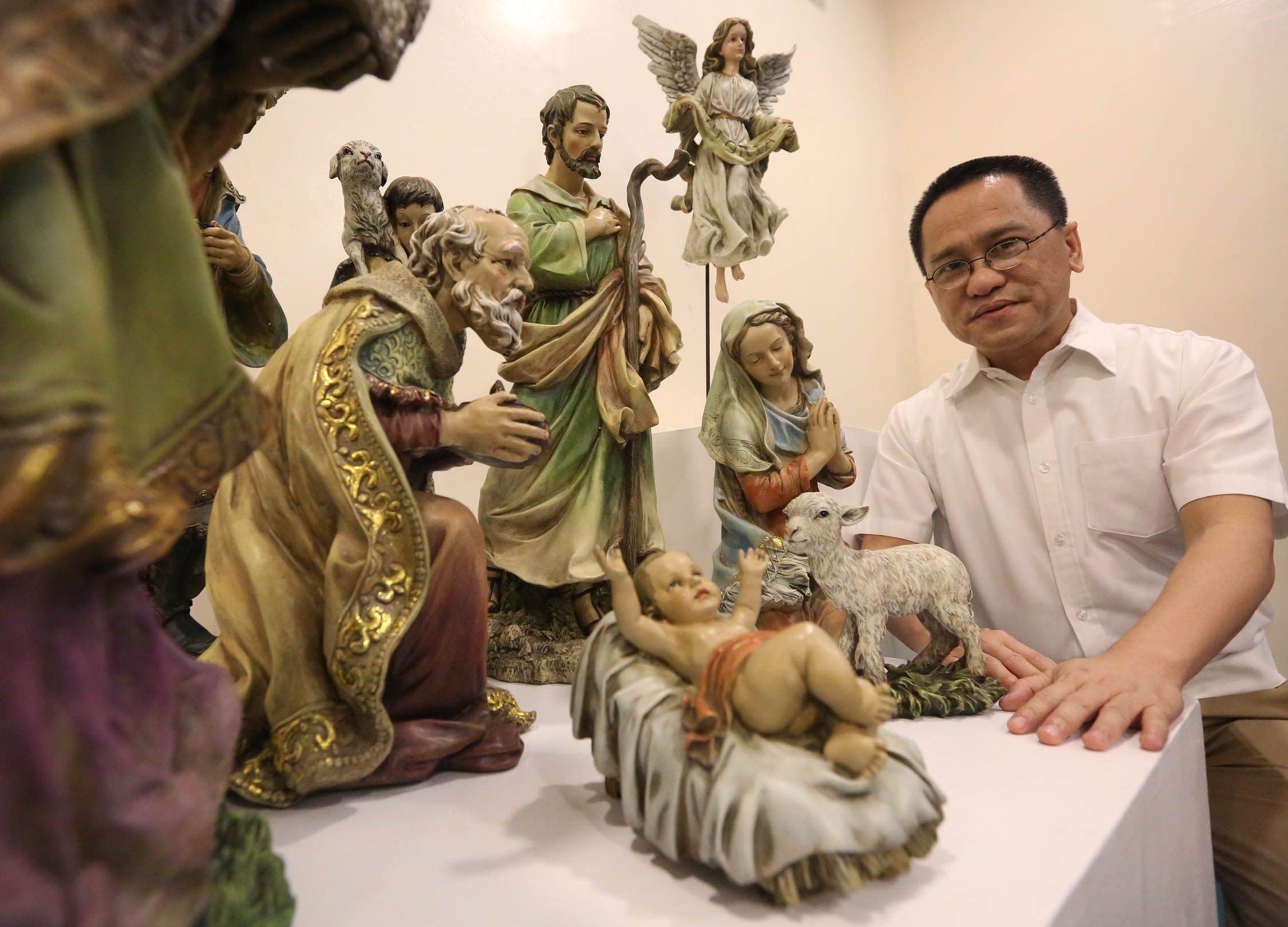
unique way of retelling one of the most-loved stories of the Christian faith. —MARIANNE BERMUDEZ
Every December, a Catholic priest dusts off his “treasure”—more than 200 “belen” (crèches) depicting the beginning of Christianity with the birth of Jesus in Bethlehem.
Each piece in Fr. Genaro Diwa’s collection has a unique way of retelling one of the most-loved stories of faith.
Some pieces feature the conventional Mary, Joseph and Baby Jesus, plus the Three Kings and the sheep. Others have the same figures wearing Filipino, South American and even Eskimo-themed clothes.
“That is the mystery of the incarnation of Jesus. It can affect the minds and lives of all, regardless of their country or cultural background,” Diwa said in an interview.
Malacañang compound
Diwa is the parish priest of the National Shrine of St. Michael and the Archangels at the Malacañang compound, where his exhibit of around 220 Nativity scenes is in its second year.
In the early 2000s, he set up the exhibit at Arzobispado de Manila in Intramuros.
The priest spruced up his collection in time for December, opening his museum at his parish to visitors for free.
Diwa began his hobby in 1992 when he was a priest studying in Rome, acquiring his first pieces of the Nativity scene one at a time since one item would cost him around P300.
He recalled being so awed by the crèche collections that he saw in Italy in those days because of the numerous ways of retelling the birth of Jesus.
“The great mystery of God becoming man touched so many different peoples of different cultures and ways … They put it up in such a way that it expresses the beauty and mystery of His incarnation,” he said.
When he returned to the Philippines in 1995, his fondness for collecting Nativity scenes continued, with many of his friends giving him crèches as “pasalubong” (gifts) from their trips abroad.
Different countries
Diwa himself did not expect that his collection would grow to more than 200 pieces, and from different countries and cultures to boot.
“Later, I realized that the exhibit I put up (at Arzobispado de Manila) helped people realize that above all other Christmas decor, the belen is the essential because it depicts what the season is all about,” he said.
The crèches are made of various materials—wax, glass, resin, yarn, wood, clay, glazed ceramic, terra cotta, silver and even old telephone directories.
Some are from the Philippines and feature Filipino motifs, while many are from Italy, Portugal, Spain, Germany, Canada, Australia, the United States, South Africa, Mexico, Peru, Argentina, and even Asian countries, such as Japan, China, South Korea and Cambodia.
Spiritual reasons
Diwa noted that unlike other collectors motivated by artistic reasons, his justification was primarily spiritual.
“I am really propelled by religious, spiritual reasons. The art and the cultural side, for me, is a bonus,” he said.
Some pieces depict the Nativity with elements unique to their country and culture.
Some of the Philippine belen, for example, have Jesus, Mary and Joseph dressed in Filipino attire, while those coming from Mexico have them dressed in Mexican costumes.
A crèche from Cambodia made from resin features Mary and Joseph with pointed heads, similar to the country’s statues, while a South African piece is made in black.
Even jolly old Santa Claus found his way into several Nativity scenes from the United States, depicted either cradling the Baby Jesus or bringing gifts and paying homage.
Polar bear
Another piece from the United States shows the Holy Family sheltered in a small igloo, dressed in Eskimo garb like the shepherds and the Three Kings. But there was no sheep, only a polar bear standing guard.
Diwa admitted to having his favorites, like his first collection and a sprawling, artistic Nativity scene from Italy.
Some are small enough to fit onto the palm of a hand—around two centimeters—like several pieces made of silver and encased in small jewelry boxes.
Museum visitors come not just from Metro Manila but even from the provinces.
Not for sale
“Some would ask me if these are for sale, but I tell them that it’s not for sale,” Diwa said.
More than being the most important decor, the belen, no matter how simple or intricate, should remind people that Christmas is not about the holiday rush but the birth of the Savior, he said.
“It is to remind people that Christmas is not about the holiday frenzy, the shopping and bright lights. It’s about the mystery of God and the incarnation of Jesus Christ,” he said.
For Diwa, the real belen is found in the hearts of men and women of faith who accept and allow God into their hearts.
“Christ is born every day in men and women of faith, when they allow Him to be born in their hearts. Bethlehem is something we carry with us when God is born in us,” he said. —JULIE M. AURELIO













































